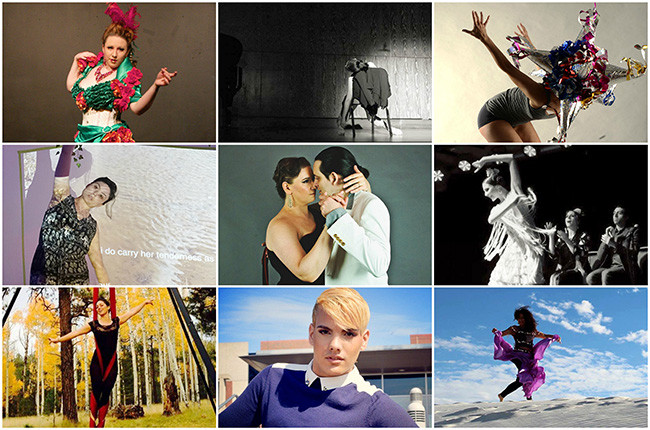What does it truly mean to be a professional dancer in 2024? This question is more complex than ever, especially in a field where long-term, salaried positions are scarce. Like many artists, I’ve grappled with my own identity as a dance professional, particularly after transitioning from the traditional dance scene in San Francisco to a more unconventional path in New Mexico, balancing dance with a writing career. My current dance life is far removed from my youthful aspirations of a conventional dance career, yet, looking at the broader dance landscape, it’s clear that the traditional “dream” had significant limitations.
So, let’s delve into the evolving Dancer Def and explore what constitutes a “professional dancer” today. In an era of increased awareness around inclusivity, diversity, and social justice, is the conventional understanding of a “professional dancer” adapting to a more inclusive and nuanced reality? Considering the inherent power dynamics linked to finances and the societal constructs of professionalism, who ultimately shapes the dancer def and dictates what professional dance embodies?
Over the past few months, numerous perspectives on professionalism in dance have been gathered from a diverse group of 15 dance artists. These voices represent a spectrum of ages, ethnicities, orientations, abilities, and dance genres – although contemporary dancers are more represented due to network connections. Some are independent artists who have forged their own paths, while others have experience within established institutions. They reside in both smaller communities and major urban centers, and their careers range from emerging to seasoned veterans.
Here are some of the most compelling and unexpected insights gleaned from this exploration into the dancer def and the multifaceted nature of dance professionalism:
Key Insights into the Evolving Dancer Def
1. Genre Specificity and Professional Parameters
Dancers rooted in specific, defined forms like ballet, flamenco, or hip-hop, demonstrated a clearer understanding of what constitutes professional dance within their disciplines. They articulated more concrete parameters regarding training, necessary skills, and the benchmarks of professionalism. This clarity seems to stem from the more defined career pathways available within these genres, leading to more standardized training and preparation compared to the more fluid world of contemporary dance. In essence, for specific genres, the dancer def is often more clearly outlined by tradition and established pathways.
2. Compensation as a Component of Professionalism
The majority of dancers interviewed agreed that financial compensation is a component of being a professional. However, the interpretation of “how much” compensation varied considerably. Interestingly, the two dancers with experience in large, institutional companies, who have since transitioned away from them, held the view that anyone who identifies as a professional dancer, is a professional dancer. This suggests that the dancer def can be self-defined, particularly when considering intrinsic motivation and dedication alongside financial aspects.
3. Self-Perception and the Psychological Dimension of Professionalism
For many, defining a “professional dancer” became an introspective exercise in evaluating their own career success and artistic legitimacy. This resonates personally, as I experience a similar internal dialogue when considering my identities as both a writer and a dancer. I don’t question my status as a professional writer, likely due to consistent paid work. However, despite extensive dance training and experience surpassing my writing background, the often-unpaid nature of my dance endeavors leads to questioning whether it’s merely a passionate hobby. This highlights how the dancer def is deeply intertwined with personal validation and societal perceptions of value.
4. “Professional Dancer” vs. “Dance Professional”: An Overlapping Definition
The distinction between “professional dancer” and “dance professional” blurred in most responses. Occupations like dance teacher and dance administrator were frequently included under the umbrella of “dancer.” While these are distinct roles, it appears that a sustainable career in dance often necessitates diversification. To make a living solely from dance, many professionals supplement performance work with teaching, administration, or related activities. This broadens the dancer def to encompass a range of dance-related professions.
5. Expanding Body Ideals and Inclusivity in Dance
Several respondents noted a significant increase in the number of individuals identifying as dancers compared to previous generations. This shift is partly attributed to the growing challenge against the narrow body stereotypes historically prevalent in ballet and modern dance. Today, we see a wider range of body types confidently embraced as professional dancers, a welcome departure from the restrictive norms of the 60s, 70s, and 80s. This evolution of the dancer def reflects a more inclusive and diverse dance landscape. However, the question remains whether funding and opportunities will adequately support this expanding field.
6. Intrinsic Motivation and Commitment Beyond Compensation
The perspectives of a flamenco dancer and a burlesque dancer highlighted that significant figures in their respective fields may not even consider themselves “professional” in the traditional sense. Many respondents emphasized a profound commitment to the art form that transcends monetary compensation. This intrinsic motivation and dedication to the craft become a crucial element in a broader dancer def, often outweighing purely financial considerations.
7. Systemic Challenges and Long-Term Sustainability
Finally, a recurring theme was frustration with the systemic challenges of building a sustainable, long-term career in dance. Navigating the dance world can be incredibly demanding, requiring resilience, adaptability, and often, significant personal sacrifice. This systemic perspective is crucial when considering the dancer def, as it acknowledges the external pressures and obstacles dancers face in achieving and maintaining professional status.
Conclusion: Envisioning a Future Where Dancers Are Valued
In closing, I share a hopeful vision for the future of dance. Imagine a day when asking dancers if they consider themselves professional elicits a resounding, “Of course! Look at how my community, culture, and society value, appreciate, and compensate my work! Why even ask?” This is the future we should strive for – one where the dancer def is synonymous with recognized value, respect, and sustainable careers.
 Prof dance collage
Prof dance collage
Alt text: A collage of diverse dancers in motion, representing the multifaceted nature of the dance profession. This image embodies the evolving dancer def and the broad spectrum of individuals contributing to the dance world.

